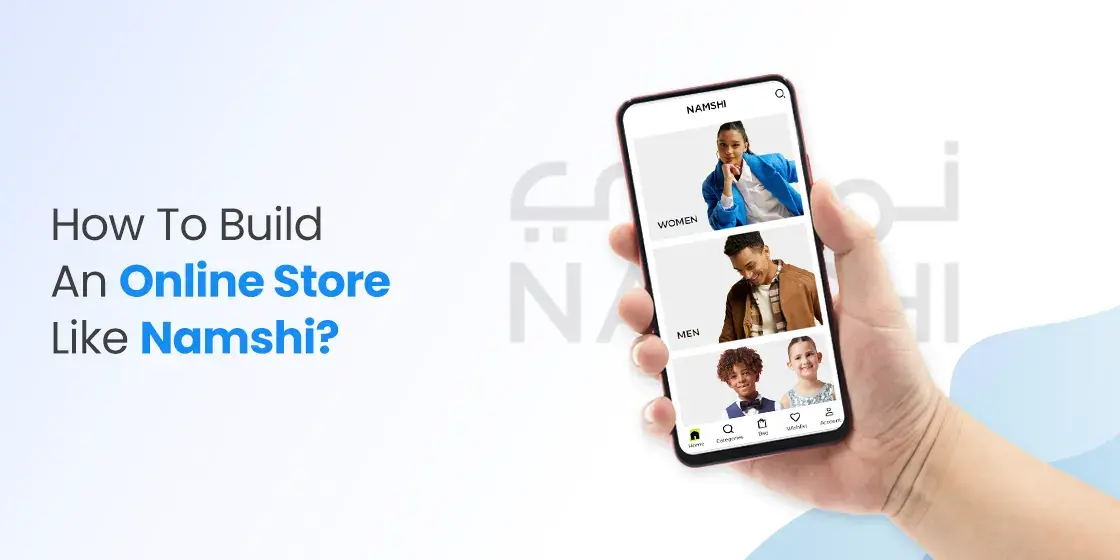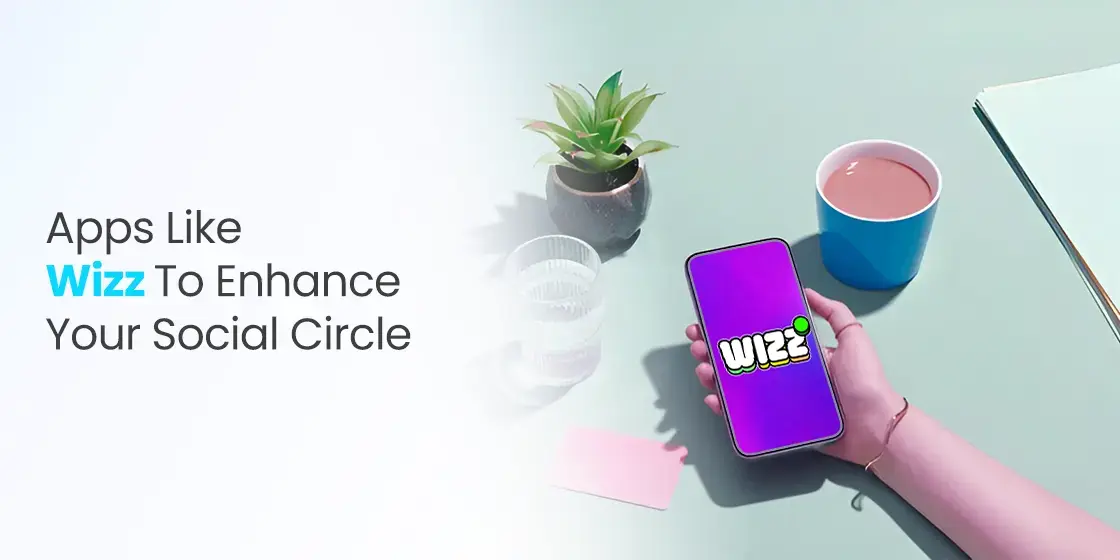Table of Content
Learning the Best Way to Build Advanced Ecommerce Apps like Namshi
The trend of online shopping is picking a lot of momentum in the UAE. People are using different types of apps to order grocery, clothes and other stuff online. One of the notable app among them is Namshi – an ecommerce giant headquartered in Dubai. It has become a popular name in the market since its inception. A lot of startups are therefore interested in the business model of Namshi. They want to know how to build an ecommerce app like Namshi that can score big in the market. It is certainly not a difficult thing, provided you’ve got the basics covered with the right ecommerce knowledge.
Witnessing the boom of online stores, many startups are looking to take leverage from this emerging market. It is best to advised to them to take professional mobile app development services to build an app like Namshi. There are a lot of companies working in the market that are offering quality app development solutions. Working with them ensures you to build quality ecommerce apps that can make your online store standout in the market.
But, if you are planning to build an app yourself, you must need to know the rules app development first. This blog is therefore written to let you understand how to build an ecommerce app like Namshi in an organized manner. Let’s start from the basics, taking a quick look at Namshi, understanding why it has become a popular ecommerce giant in the UAE.
Namshi – UAE’s Renowned Ecommerce Giant
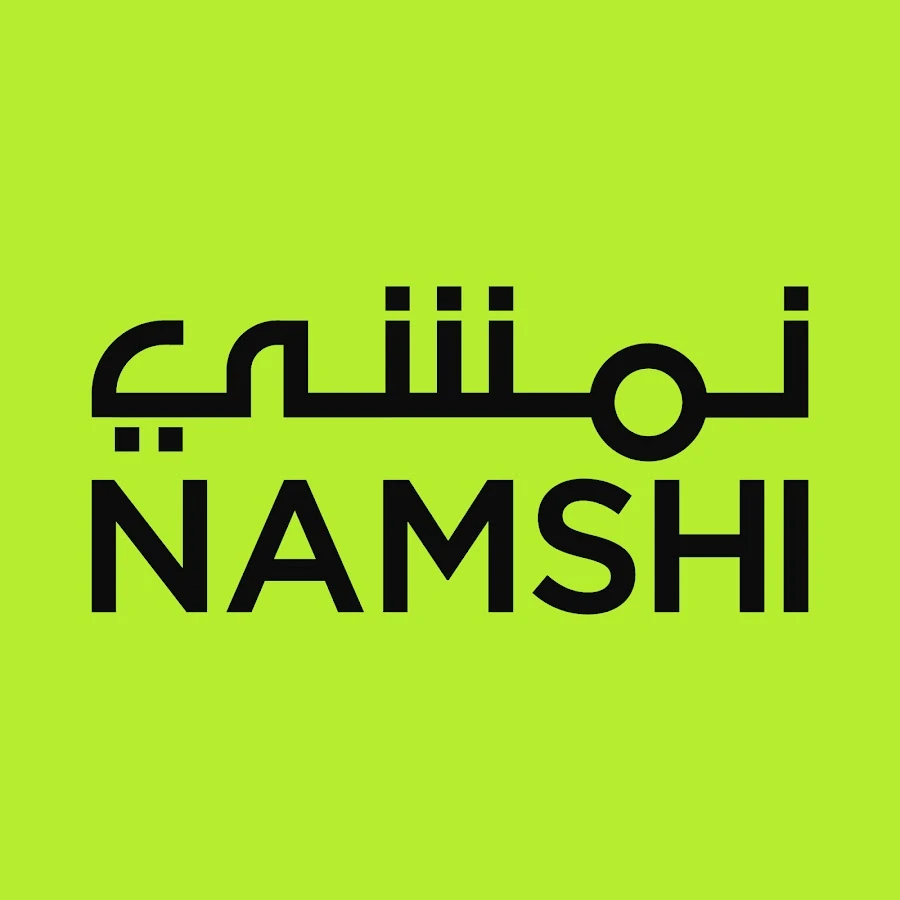
Namshi is an e-commerce platform based in the Middle East, particularly popular in the United Arab Emirates and Saudi Arabia. Launched in 2011, Namshi has become a leading online fashion and lifestyle retailer in the region. The platform specializes in offering a diverse range of products, including clothing, footwear, accessories, and beauty products, catering to a wide audience with a focus on contemporary and trendy styles. Namshi’s user-friendly interface and seamless shopping experience have contributed to its success in the competitive e-commerce landscape.
One of Namshi’s notable features is its commitment to providing a curated selection of international and local brands. Customers can explore a mix of well-known global labels and emerging regional designers, ensuring a comprehensive and diverse shopping experience. Just like many food delivery apps in the UAE, the platform also emphasizes customer engagement through regular promotions, discounts, and exclusive collaborations, creating a sense of excitement and loyalty among its user base. Namshi’s dedication to staying on-trend and meeting the evolving demands of its customers has solidified its position as a go-to destination for fashion enthusiasts in the Middle East.
Namshi’s mobile application plays a pivotal role in enhancing the overall shopping experience for its users. The app offers a user-friendly interface, allowing customers to browse seamlessly through the extensive product catalog, make secure transactions, and track their orders with ease. With features like personalized recommendations, real-time updates, and a streamlined checkout process, Namshi’s app is designed to provide convenience and accessibility, reflecting the company’s commitment to embracing technological advancements to meet the evolving needs of modern consumers in the Middle East’s dynamic retail landscape.
How to Build an Ecommerce App like Namshi?
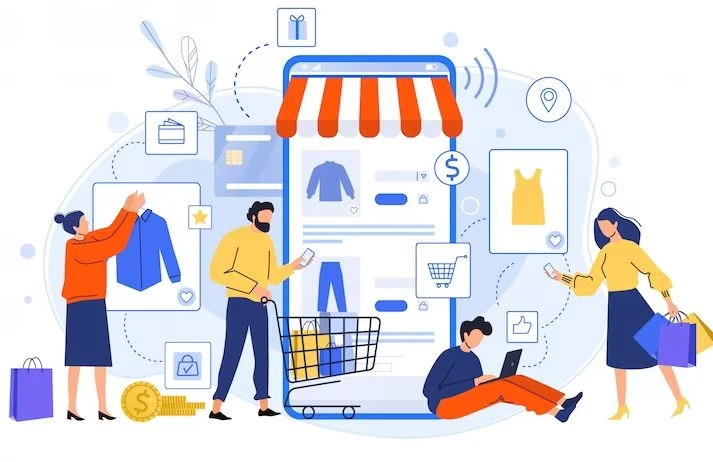
Every startup that is planning to enter in the ecommerce industry, wants to develop an app like Namshi. It has become a benchmark for many companies that are looking to take leverage from this great online market. However, creating such app is not that easy, as it requires you to follow some specific steps.
Below, we have discussed the complete process of developing an ecommerce app similar to Namshi. Being a beginner, you can follow these steps to build a quality ecommerce app like SHEIN or Namshi that can fulfill the needs of the emerging online consumer market.
Evaluate Market Practices
Conducting market research is a crucial step in developing an ecommerce app to ensure its success in a competitive landscape. The first step involves identifying your target audience and understanding their needs and preferences. This can be achieved through surveys, interviews, and analyzing existing data. By gathering demographic information, consumer behavior patterns, and identifying pain points in the current market, you can tailor your ecommerce app to meet specific customer demands.
The second step is competitor analysis, where you assess other ecommerce apps in the market. Analyze their strengths, weaknesses, opportunities, and threats. By understanding what works well for successful competitors and identifying gaps in their offerings, you can position your app strategically to stand out. Look at customer reviews, social media discussions, and market trends to gauge user sentiment and expectations. This information can guide you in creating a unique value proposition for your ecommerce app.
The final step involves staying abreast of the latest tech trends in the UAE. Keep an eye on emerging technologies, payment systems, and user experience enhancements within the ecommerce industry. Understanding the evolving landscape ensures that your app remains relevant and competitive. Additionally, beta testing and obtaining feedback from a small group of users can provide valuable insights into the user experience, allowing you to make necessary adjustments before launching the app to a wider audience.
Define Project Objectives
Defining clear objectives is a crucial initial step in the development of an ecommerce project as it sets the direction and purpose for the entire initiative. The first step in this process is to establish business goals. This involves understanding the overarching aims of the ecommerce project, such as increasing sales, expanding market reach, or enhancing customer engagement. These goals should align with the overall business strategy and contribute to the organization’s success. Objectives related to revenue targets, customer acquisition, and market share can be identified at this stage.
Afterwards, it is time to define specific, measurable, achievable, relevant, and time-bound objectives. Break down the overarching business goals into smaller, actionable tasks with quantifiable metrics. For example, if the goal is to increase sales, the objective could be to achieve a specific percentage increase in online transactions within a set timeframe. This approach allows for better tracking and evaluation of progress throughout the development process. Ensuring that objectives are realistic and aligned with the resources available is essential to maintain feasibility.
Next up, you need to incorporate key performance indicators (KPIs) to measure the success of the ecommerce project. Identify metrics such as conversion rates, average order value, customer retention, and website traffic. Establishing KPIs allows for continuous monitoring and assessment of the project’s performance against the defined objectives. This iterative process helps maintain focus and clarity, ultimately contributing to the successful development and implementation of the ecommerce project.
Select Development Stack
Selecting the appropriate development stack for an ecommerce app is a critical decision that significantly impacts the app’s performance. Firstly, you’ll need to carefully assess the specific requirements of the ecommerce project. Consider factors such as expected traffic volume, desired features, and future scalability. For instance, if the app needs real-time updates and high interactivity, a JavaScript framework like React or Vue.js might be suitable for the frontend. If scalability is a primary concern, a backend technology with robust database capabilities, such as Node.js or Django, should be considered.
The second step involves evaluating the security aspects of the development stack. Security is paramount in ecommerce applications, as they involve sensitive customer information and financial transactions. Choose mobile app development tools and frameworks with strong security features and a track record of addressing vulnerabilities promptly. Additionally, prioritize the use of HTTPS, secure payment gateways, and data encryption protocols. Ensure that the selected development stack complies with industry standards and regulations, such as PCI DSS, to guarantee a secure online shopping experience.
Lastly, the development team’s expertise and familiarity with the chosen stack are crucial factors. Opt for technologies and frameworks that align with the skills of the development team to expedite the development process and minimize the learning curve. A well-experienced team can leverage their proficiency to overcome challenges efficiently and optimize the app’s performance. Regularly update the development stack to incorporate the latest security patches, performance improvements, and features to keep the ecommerce app competitive in the evolving digital landscape. By combining user insights, and technological awareness, a well-rounded market research strategy lays the foundation for a successful Ecommerce app and digital banking app.
Build a Prototype
Building a prototype for an ecommerce app like Carrefour or Namshi involves several key steps to ensure a seamless and user-friendly experience. At the first place, you need to conceptualize and define the app’s purpose, target audience, and unique selling points. Conduct thorough market research to identify user needs and preferences, which will guide the development process. Then, you’ll need to outline the core features such as product listings, search functionality, user accounts, and a secure checkout process. All of these things are pretty important for an ecommerce app, hence you need to test them first by building a prototype.
Next, design the user interface (UI) and user experience (UX) of the app. Create wireframes and mockups to visualize the app’s layout, navigation, and overall aesthetics. Tools like Sketch, Adobe XD, or Figma can aid in the design process. Focus on creating an intuitive and visually appealing interface that aligns with your brand identity. Solicit feedback from potential users or stakeholders to refine the design and ensure it meets their expectations.
Once the design is finalized, proceed to the development phase. Choose a suitable technology stack and framework for your ecommerce app. Popular choices include React Native for cross-platform development or Swift/Java for native app development. During this stage, functionality takes precedence over polish, aiming to create a functional representation of the final product. The refined prototype serves as a valuable foundation for the full-scale development of the ecommerce app, ensuring that it meets user expectations and business requirements.
Perform App Testing
Testing an ecommerce app is a critical phase to ensure its functionality, security, and user experience meet high standards. The first step is to conduct functional testing, focusing on the core features such as product listings, shopping cart functionality, user registration, and checkout processes. Test each step of the user journey to identify any bugs, inconsistencies, or issues with the flow. Automation testing tools can be employed for repetitive tasks, helping to expedite the testing process and ensure thorough coverage.
Next up, security testing is paramount for an ecommerce app, given the sensitive nature of user data and financial transactions. Conduct penetration testing to identify vulnerabilities and potential security threats. Ensure that the app complies with industry standards for data protection and follows secure coding practices. Test payment gateways thoroughly to validate the secure processing of transactions. Regularly update security measures to stay ahead of evolving cyber threats and protect both the app and user information.
Usability testing is the final crucial aspect of ecommerce app testing. Gather a diverse group of users to evaluate the app’s user interface, navigation, and overall user experience. Collect feedback on any areas that may cause confusion or frustration. Analyze the user journey, from product discovery to checkout, and optimize the app based on user preferences. Iterate on the design and functionality to enhance the overall usability and ensure that the ecommerce app meets the expectations and needs of its target audience.
Key Features of an Ecommerce Application
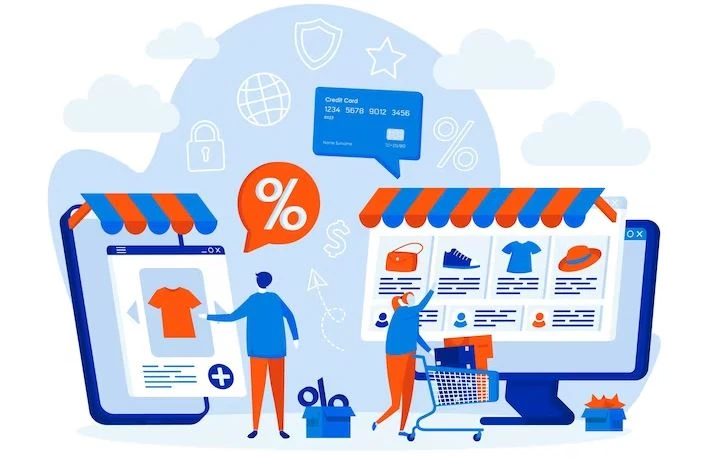
An ecommerce application should be built with a variety of features. The quality of app functions often decide its success or failure in the market. If you do not know which type of features should be present in an ecommerce app, take a look at the list defined below.
Quick Login Process
Every application involves the login page, and if the login procedure proves to be lengthy or requires an excess of personal details, it can lead to user frustration. It is best advised to incorporate Google login to achieve a smooth and uncomplicated login experience. This functionality not only reduces the time spent on logging in, but also enables users to access the application through their pre-populated profiles, enhancing convenience.
Vast Product Listing
An essential feature for the vendor aspect of ecommerce app development involves the capability to generate, edit, and remove product listings. It is crucial for your application to empower sellers, enabling them to manage their product listings independently without the need to reach out to the app’s administrative team. The goal is to ensure a user-friendly experience that allows sellers to effortlessly control their offerings within the app.
In-app Messaging
While developing an ecommerce app like Namshi, incorporating a feature that facilitates communication between sellers and shoppers for addressing inquiries proves invaluable. This functionality becomes even more advantageous, especially when your application offers personalized products. Therefore, it is essential to integrate in-app messaging, because it is a convenient tool for both vendors and customers to interact seamlessly.
Comprehensive Product Search
A pivotal feature with significant revenue implications for an ecommerce app involves an advanced search function that allows customers to locate products based on concise descriptions and names. Many ecommerce apps often opt for the integration of AI to facilitate a seamless understanding of customer search queries, regardless of the varied ways in which they are expressed. This utilization of AI contributes to enhancing the app’s capability to discern and respond effectively to user queries.
StruqtIO: Your Exquisite Partner to Develop Interactive Ecommerce Apps
StruqtIO stands out as a reputable name in the technological landscape of the UAE, delivering diverse software development services to its clients. Our expertise extends to crafting state-of-the-art ecommerce applications tailored to your specific requirements. Our adept teams possess a comprehensive understanding of developing cross-platform ecommerce apps, ensuring seamless facilitation for online shoppers.
In addition to mobile app development, our service portfolio spans across various development domains. From bespoke software development to cloud integration, and database development to software outsourcing, we provide an extensive array of services designed to propel your business swiftly into the next era of digital advancement.
Frequently Asked Questions
| What type of services Namshi app offers? Namshi is a popular ecommerce app functional across various cities of the UAE. It allows people to shop online a variety of products, like clothes, accessories, groceries and more others easily. |
| Why is Namshi popular in the UAE? Namshi has become quite a popular name in the UAE. The app allows people to shop various types of products online, which is what makes it popular among the residents. |
| What is the cost of developing an ecommerce app like Namshi? To develop an ecommerce app like Namshi, you have to keep a clear budget of minimum $20,000. This amount can easily expand more based on the features and functions required by the client. |
Final Words
That brings us to the end of this blog in which we have discussed how to build an ecommerce app like Namshi in a professional manner. The demand of these apps is certainly increasing, as every business wants to jump into the venture of ecommerce currently. This blog is therefore written to let them know how to build an ecommerce app that can instantly grab the market attention. The tips defined in this blog will help them to follow a pathway that will lead to quality app development in the end.
Meanwhile, if you are looking to hire a mobile app development company that could help you to build advanced ecommerce apps like Namshi, get in touch with us today. Using the right development methodologies, we will make sure to build quality apps as per the given requirements.

Empower your digital journey with StruqtIO - Your dedicated partner for cutting-edge custom software development, innovation, and digital transformative solutions. Harness the power of technology to elevate your business and redefine your digital landscape today.
